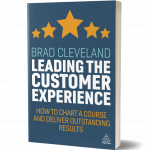In recent years, customer advocacy has been a hot topic in marketing and customer service circles. But if you do a search on the term, you’ll find two very different definitions.
One is an internal perspective: focusing the organization on what’s best for customers, creating great customer experiences, advocating for them, and helping them resolve problems. This is the prevailing view in customer service and operations circles.
The other is an external perspective: defining customer advocacy in terms of customers who advocate for you, spreading the word about your products, services and brand. This perspective is common among those in marketing and sales.
So, which of the two is correct? Both! I define customer advocacy this way:
Customer advocacy consists of the actions you take to focus the organization on doing what is best for customers, which, in turn, rewards you with loyal customers who advocate for your products and brand.
Market leaders have a holistic focus on both the internal and external aspects of customer advocacy. Of course, the main focus is on what you and your organization do. You won’t have customers who promote your products and brand without identifying and meeting their needs, focusing on what is best for them. But it’s increasingly expected (and powerful) to acknowledge and engage appropriately with customers who are fans and promoters.
How organizations approach customer advocacy can be broadly categorized into four quadrants:
Low internal focus, low external focus: the “unaware.” These organizations are unaware of or simply ignore the principles of customer advocacy. This is unfortunate for them and for their customers.
High internal focus, low external focus: the “timid.” These organizations do a great job of focusing on customer needs. But they miss opportunities to engage with customers who are brand promoters. They also miss opportunities to create additional brand promoters.
Low internal focus, high external focus: the “pretenders.” These organizations see customer advocacy in terms of what customers who are brand promoters can do for them. But they haven’t done the hard work to earn their loyalty.
High internal focus, high external focus: the “leaders.” These organizations work hard to understand customer needs, and focus on doing what is best for them; they earn a good reputation and brand promotion. They also acknowledge and engage appropriately with customers who are brand advocates.

Excerpt from Leading the Customer Experience: How to Chart a Course and Deliver Outstanding Results by Brad Cleveland.



0 Comments